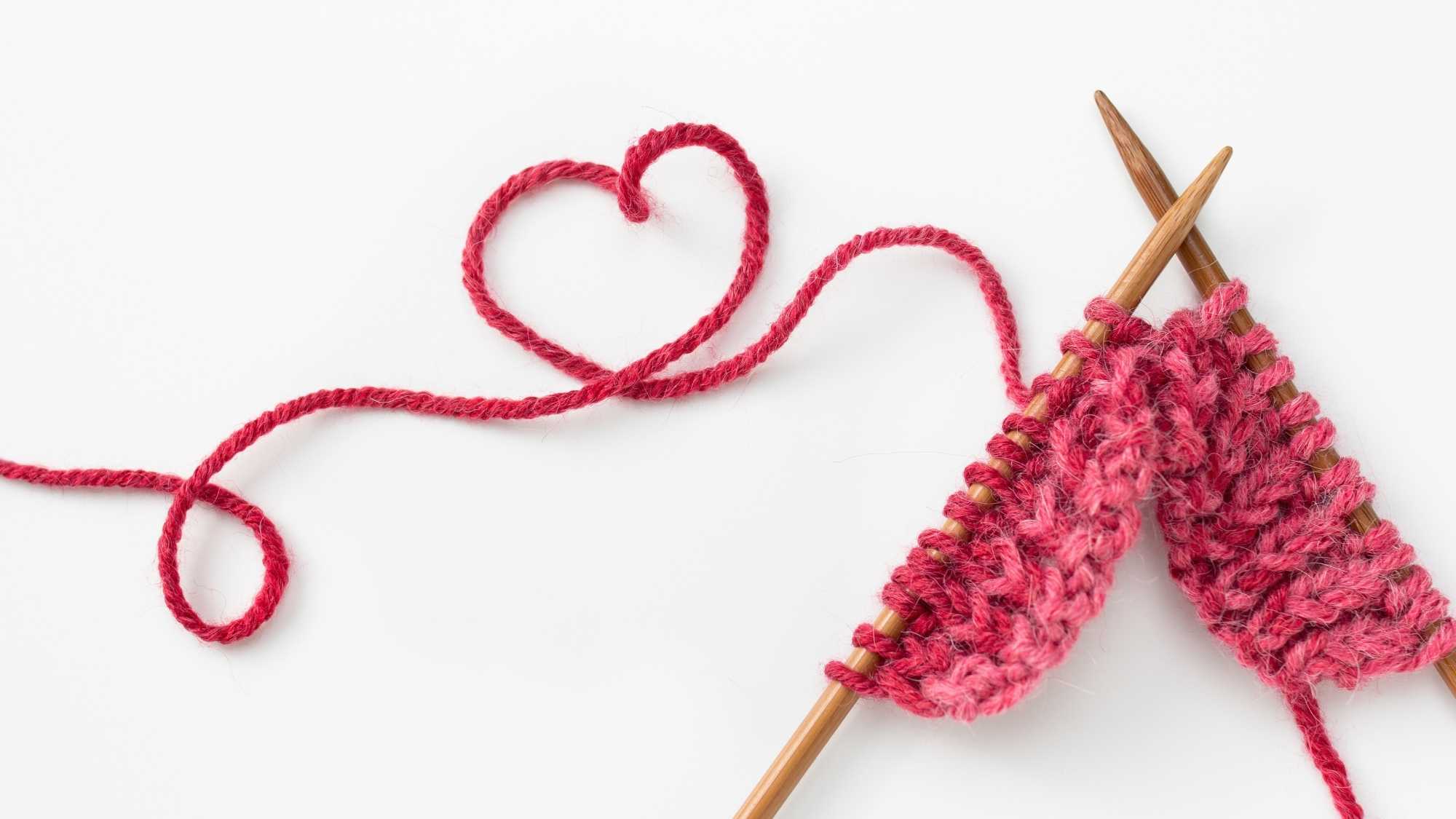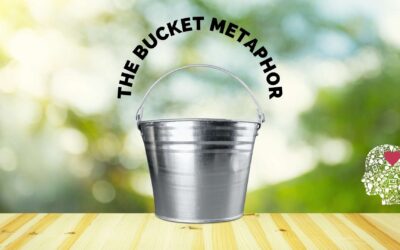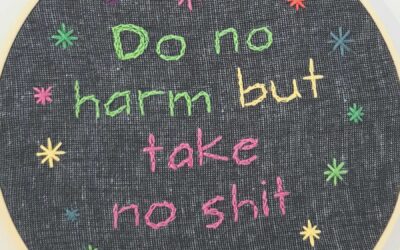Dr Mia Hobbs (Clinical Psychologist) writes about how knitting has supported her own wellbeing and professional life. She describes the mindful nature of the process, what it can teach us about growth, and how it can build connection and community. I hope it inspires you as much as it did me!
Unravelling the therapeutic benefits of knitting: a personal story
On reflection, my journeys with knitting and clinical psychology have always been interwoven. During the first term of my doctorate, I visited my mum for the weekend. She told me that she had met the parents of a recently qualified psychologist whose urge to do something entirely unrelated to psychology during her doctorate had led her to learn to brick-lay.
My mum felt I should learn to knit, so (mostly to please her) I took some needles and yarn and she showed me the basics. It was amazing that even though my brain had forgotten what to do, my hands clearly remembered the movements from the tiny, holey mouse-blanket I had made on my Donald Duck needles at the age of about 7.
This was the beginning of my journey with therapeutic knitting – to help me manage the demands of the clinical psychology doctorate.
Rhythmical repetitive bilateral movement
As a prolific knitter and quilter, my mum had beautiful woollen shawls draped over the arms of her sofa, and convinced me that with only the basic stitches I could make one myself. On the way to the train station the next day we stopped at John Lewis to buy me my own yarn and needles and she cast on 5 stitches for me. It was helpful that this shawl started with only 5 stitches as the number of stitches in each row increased gradually along with my confidence and commitment to my knitting project.
During my first year exams, I remember stopping for a row of knitting every time I needed a break. At the time I had no idea I was engaging in ‘therapeutic knitting’ but I definitely appreciated the soothing nature of the rhythmical action of forming each stitch, and felt that by focussing on what my hands were doing, it allowed my busy brain to rest.
Researcher and author, Betsan Corkhill, summarises the therapeutic qualities of knitting in her ‘Knitting Equation’ and notes that that the automatic, repetitive and rhythmical movements of knitting have benefits akin to meditation.
I still have and wear my first knitted shawl and it will always remind me of the relief of passing the first year of clinical training and the start of my journey as a knitter.
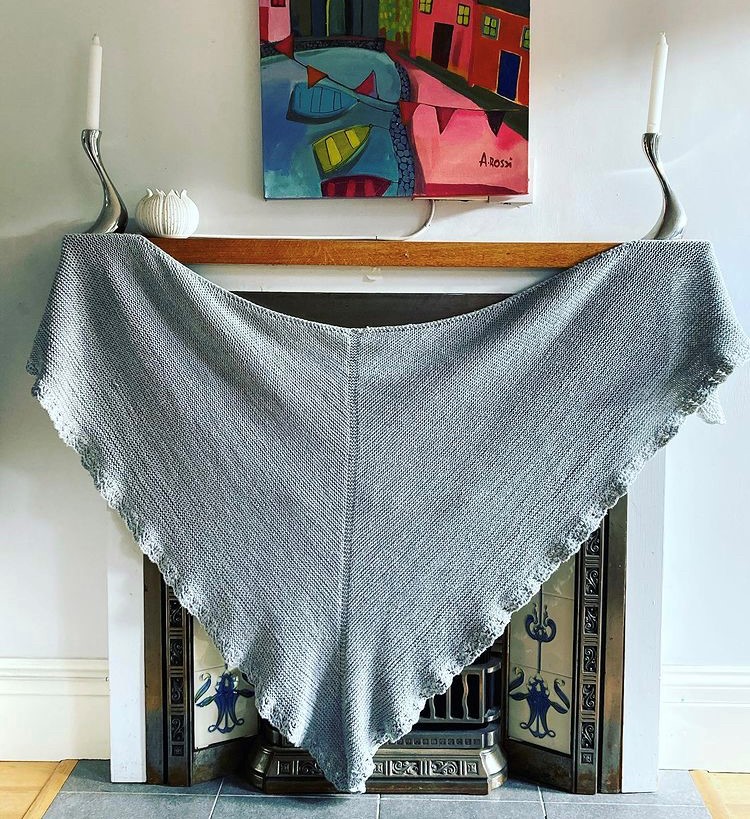
My first knitted shawl
Making progress in small increments
My knitting skills grew, and by the final year of my training I was busily making a shawl to wear to my graduation celebration. This deadline taught me another of the major benefits of therapeutic knitting: that you can make significant progress in tiny increments of time.
A few stitches on the bus to work or while waiting for a friend in a café can all add up. As Betsan Corkhill notes in her book ‘Knit for Health and Wellness’ the ability to make tangible progress in small increments is extremely helpful for new knitters or those struggling with low mood.
As a psychologist, I often relate this to the idea of ‘behavioural activation’ used in a cognitive-behavioural approach to low mood. The theory suggests that people experiencing low mood benefit from engaging in activities which allow them to experience pleasure and/or a sense of achievement
However when we are struggling with low mood, engaging in any activity can feel overwhelming. Knitting is a convenient and portable activity that can offer both pleasure and a sense of achievement even if only a few stitches are made at a time.
Connection and community
On leaving the adolescent team where I spent my final placement year, I was stunned to receive a cushion with a ‘rustic’ handknitted patchwork cover as a leaving gift.
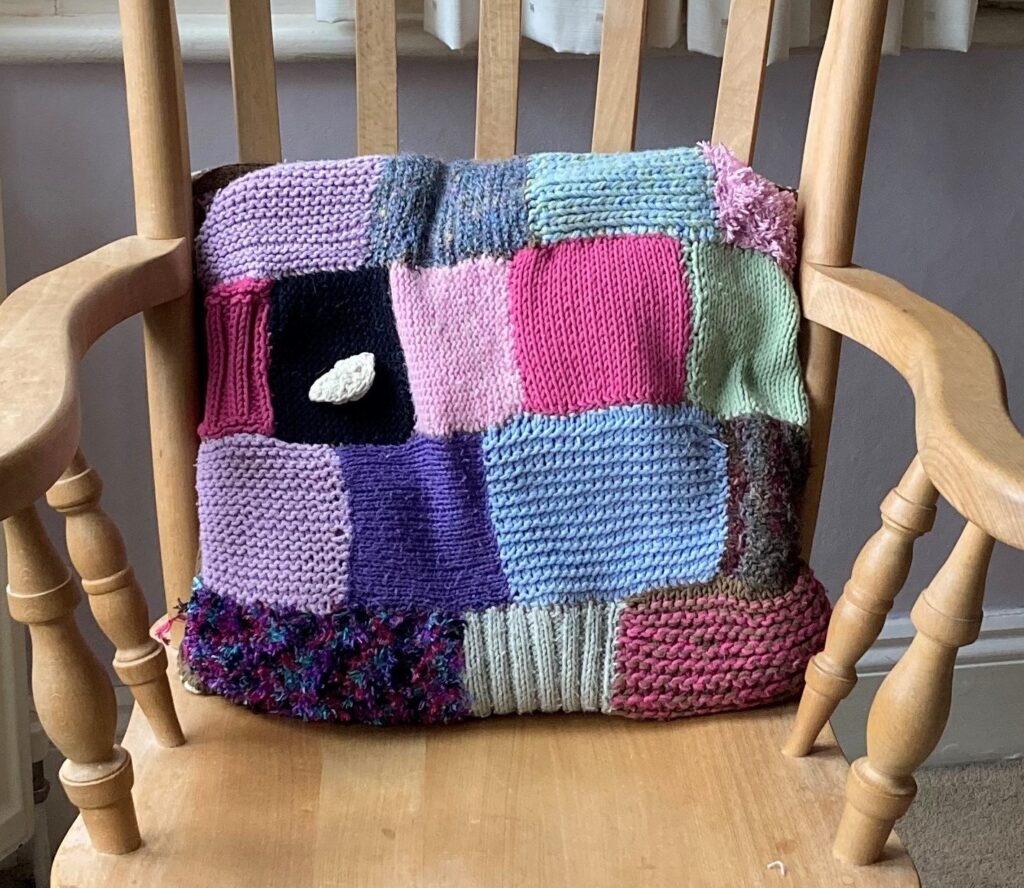
A leaving gift
This was presented to me alongside a photo album with evidence that the whole team, including many non-knitters, had contributed stitches towards this gift. Never has a leaving present been more meaningful or appreciated and the cushion lives in my bedroom to this day, over 13 years later.
The legacy of this thoughtful gift has lived on in another way as I have borrowed this idea to create blankets for several colleagues expecting babies. In my last Child and Adolescent Mental Health Service (CAMHS) team, a very dear friend and colleague was expecting twins following a very challenging journey to her pregnancy. After the third ‘rusty knitter’ approached me for help in making something for the babies, I decided that we should collaborate and all knit or crochet squares that I would then join together to make two blankets.
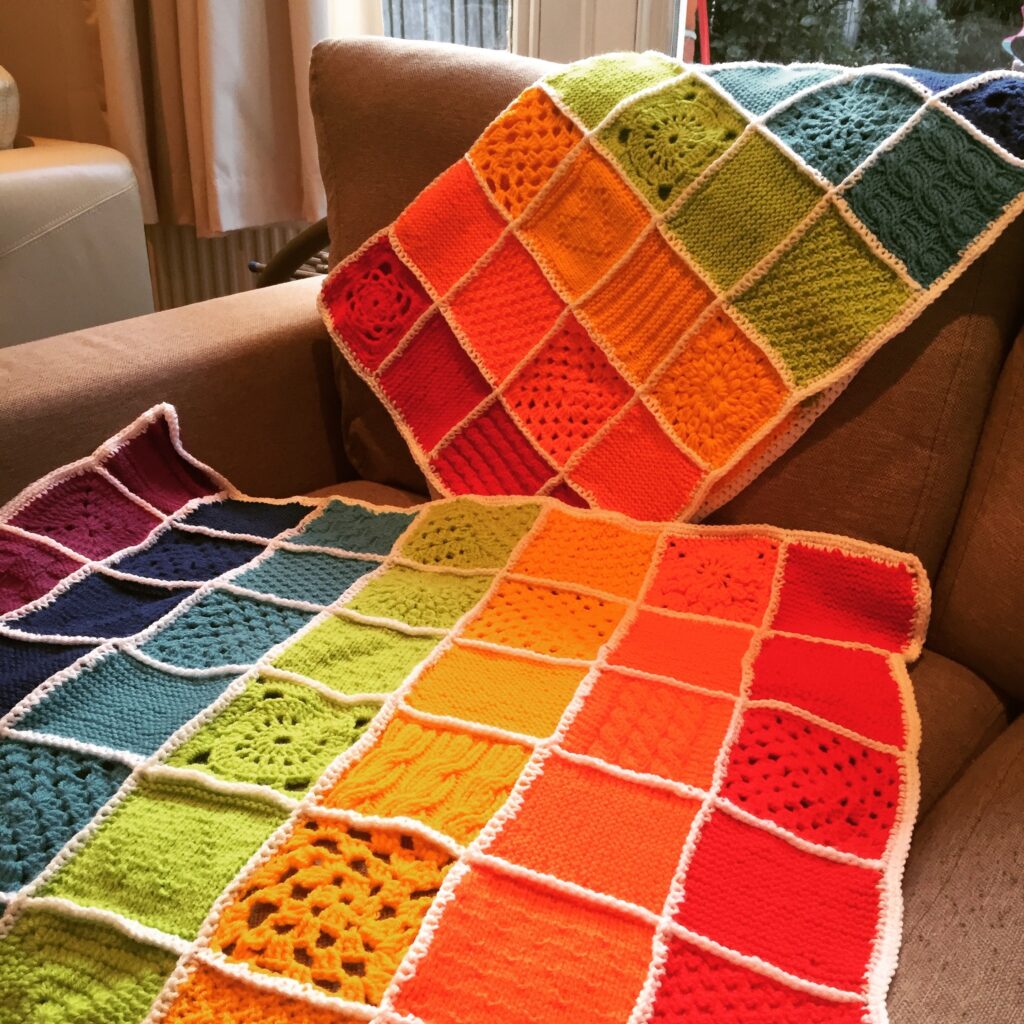
Creating connection and community
While our friend was touched to receive the two rainbow blankets for her twins, the project also brought unanticipated benefits to those of us who contributed. Many of us stopped working at least once a week to have a lunch break together so we could knit, and I could help retrieve dropped stitches or teach a new person who wanted to contribute.
I certainly felt a stronger sense of team morale during this time, and had conversations with colleagues I otherwise knew little about. While a few colleagues were admittedly rather reluctant participants, others commented that they had enjoyed learning or remembering how to knit, and appreciated having this little oasis of calm in an otherwise hectic day in CAMHS.
One colleague who was completely new to knitting and crochet continues to this day, 5 years on, and made 91 crocheted hearts as her wedding favours.
A transitional project
Knitting also supported me through the end of my career in the NHS. Leaving was not a decision I had planned or anticipated and many tears were shed in the process. By this point, I was choosing knitting projects more mindfully for their therapeutic benefits, and I knew I needed a big project to help me with the transition of leaving the NHS.
The ‘Starting Point’ wrap by Joji Locatelli was released the previous month and as a huge shawl in 5 colours, constructed by working two separate halves which are then knitted together, it seemed a perfect metaphor for my transition from NHS to private practice.
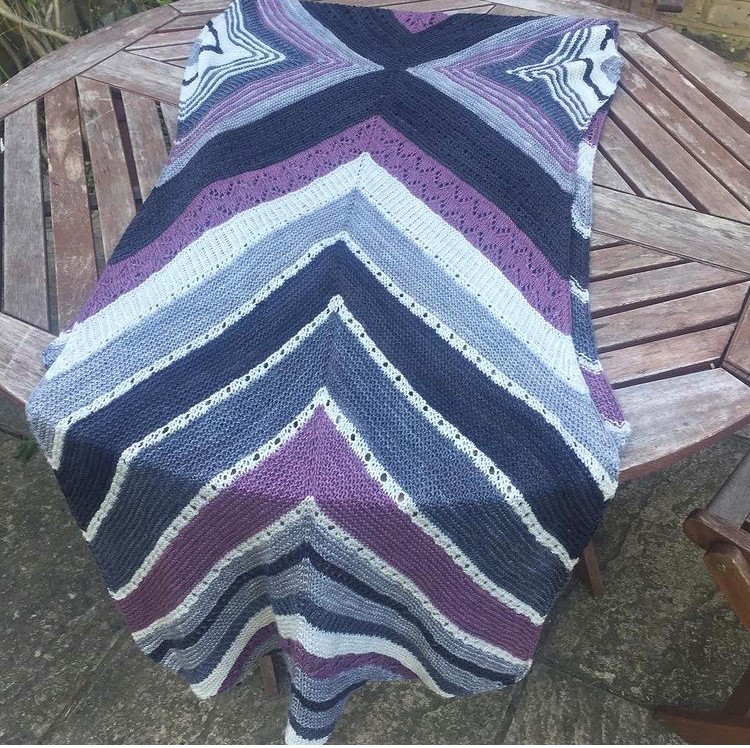
‘Starting Point’
My Starting Point wrap wasn’t finished quickly. I had to take a deep breath and grit my teeth before starting again from scratch with the second half. This mirrored the many challenges of leaving the familiarity of an established NHS career to build something new from the beginning.
However, during this new phase of my life, I relied heavily on what I had learned as a knitter – the process is as important as the end result. And that sometimes things need unravelling a few times before they work out.
I honestly feel that I was better able to tolerate the pressure I felt (from within myself!) to make my business a success. I was also more able to be patient in seeing the value of the process of moving towards my goal slowly and steadily.
I love having this huge shawl to wrap around me, which will always remind me of my NHS career and my ability to manage change that I hadn’t necessarily chosen or anticipated. It also taught me the value of making space for the transition to be a project in itself, and taking it one step (or stitch) at a time.
Therapeutic knitting
It is a common assumption among knitters that it has therapeutic benefits, and there is emerging evidence to confirm this and to suggest that people in a clinical population may also experience a reduction in anxiety and increased sense of calm when learning to knit.
Since starting in private practice in 2017, I have often read, reflected and talked to others about the therapeutic benefits of knitting, but only recently have I started to turn this into action. I am now running a therapeutic knitting group in a local primary school and recording the first series of my podcast ‘Why I Knit’ in which I interview a diverse range of knitters to learn more about their experiences of the therapeutic benefits of knitting.
I have also started to introduce the idea of knitting or other handcrafts when discussing behavioural activation or mindful activities with some of the young people I see for individual therapy.
I hope that this will encourage those of us who are existing knitters to deliberately and mindfully use this craft to its full therapeutic potential, and to introduce some new potential knitters to the idea that knitting could have more to offer than just the ability to make great jumpers!
Dr Mia Hobbs is a Clinical Psychologist working with children, young people and their families. You can learn more about the therapeutic benefits of knitting at her website www.therapeuticknitting.org and follow her on Instagram @knittingistherapeutic.

